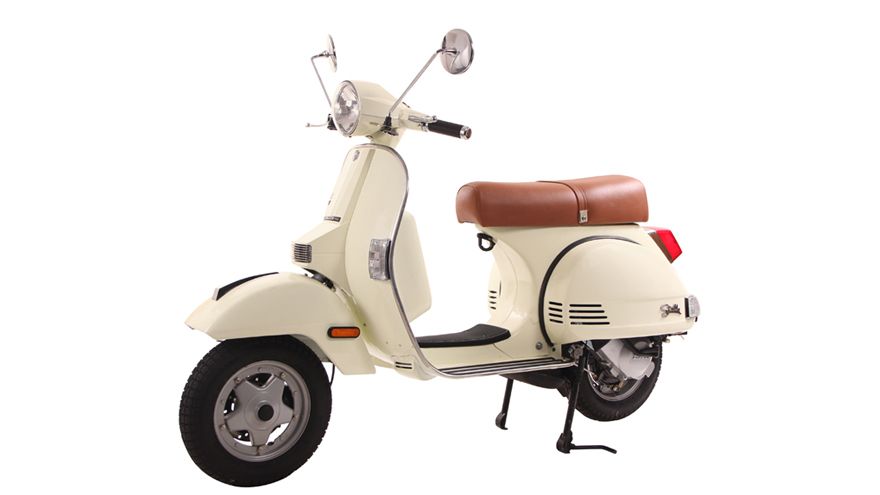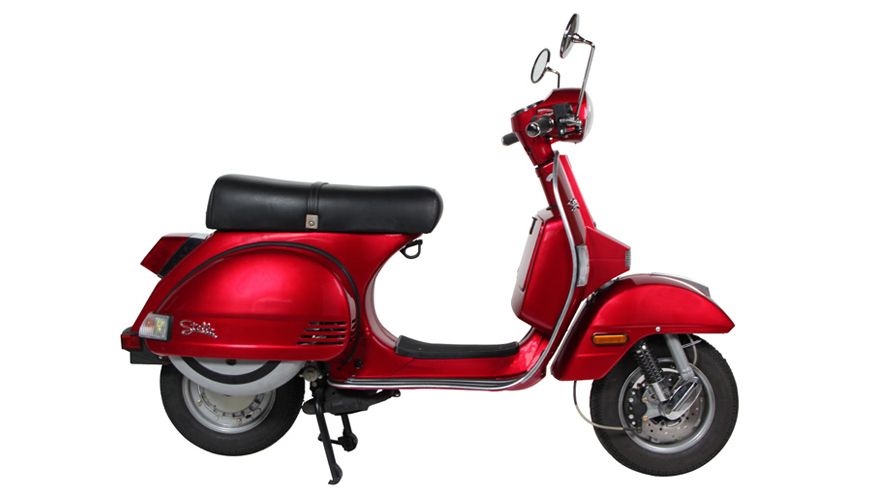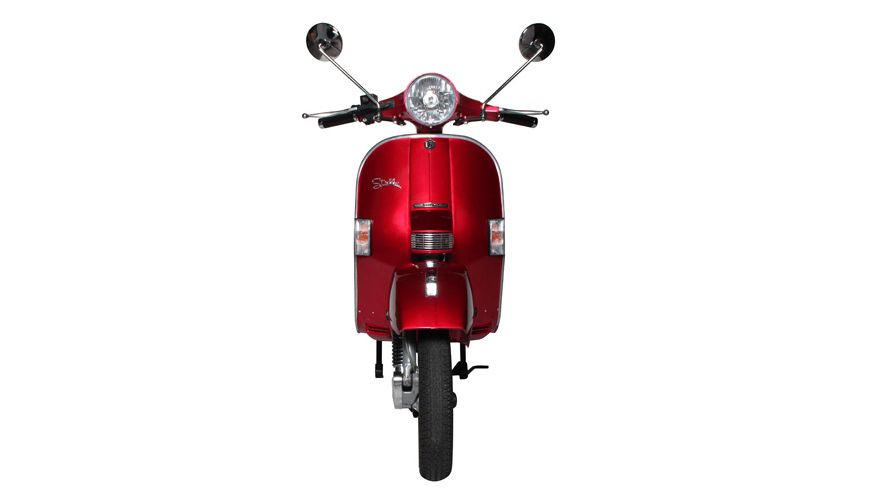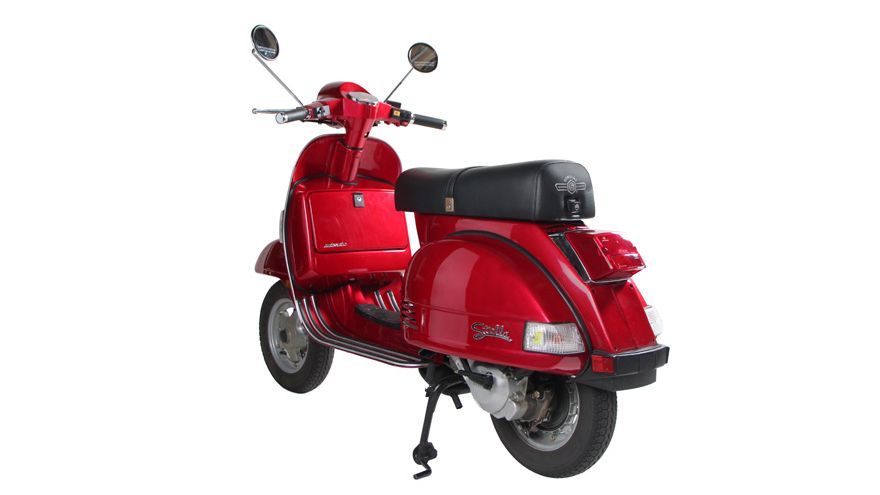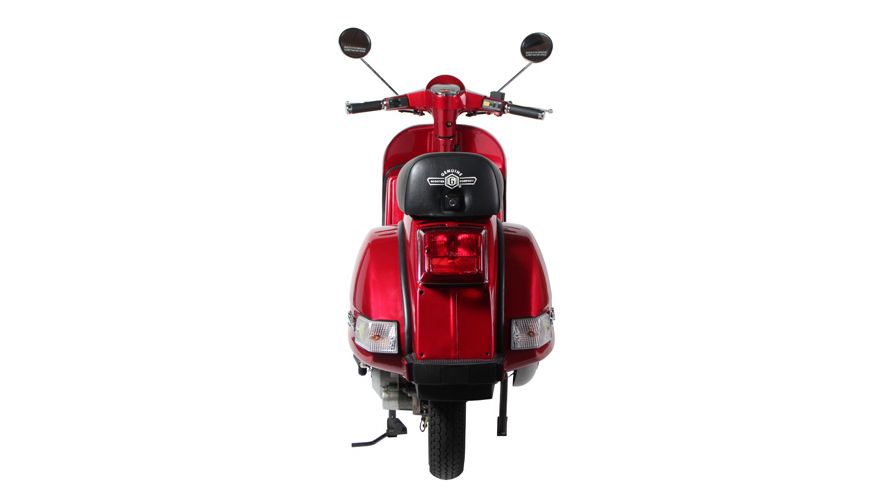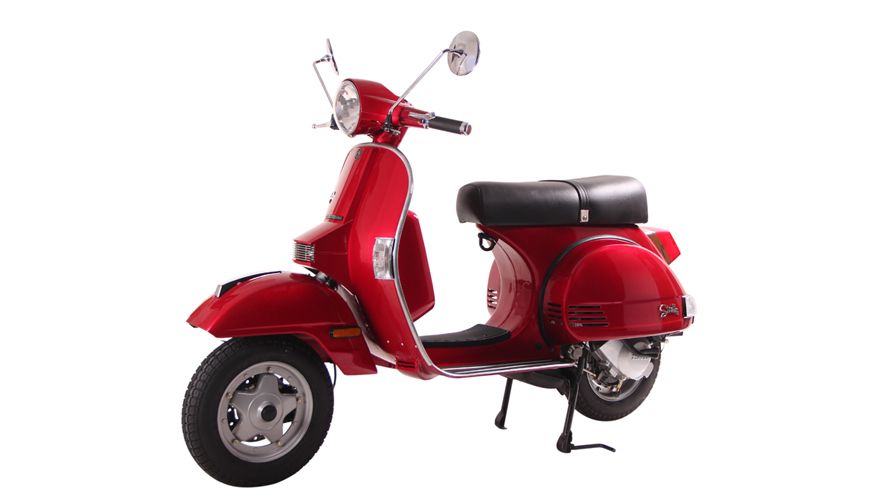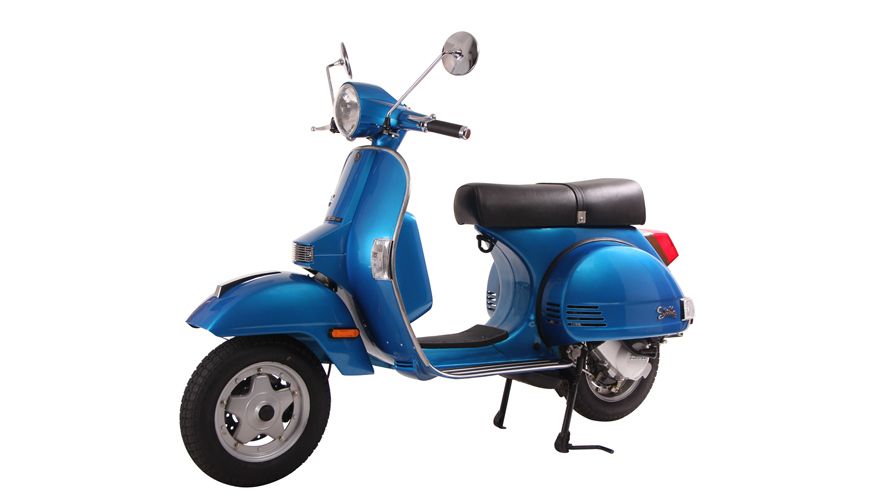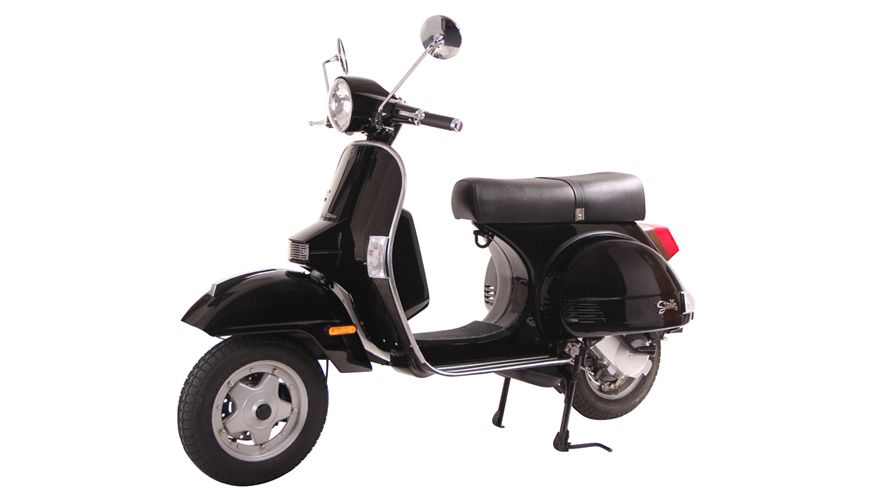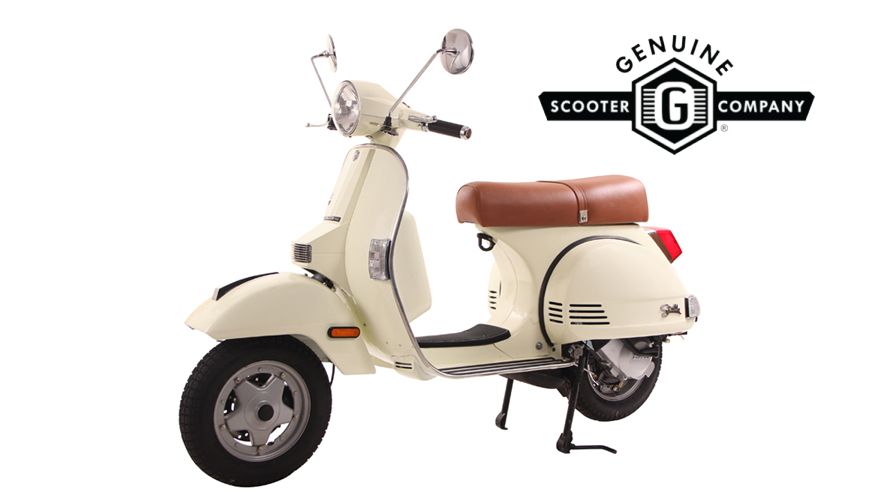Genuine Scooters brings its updated “Stella” scooter to the U.S. market with a number of improvements over the previous generation. Gone is the old two-cycle engine in favor of a modern four-stroke 125 cc engine that brings more power to the table while meeting more stringent emissions standards. The old twist-grip manual shifter even gets relegated to the history books, as well, with the switch to an automatic. That classic '70s charm remains, though, and so the Stella looks pretty much the same as ever, even if it has finally decided to join the 21st century. The Stella is built by the Lohia Machinery Limited factory in Kanpur, India. LML made its Italian connection with Piaggio back in '86, and that experience clearly shows in the overall design. In fact, fans of the Vespa brand will recognize the Stella as being very similar to the A1, so even though the scoot is assembled in India, the design itself is truly from the Old Country.
Continue reading for my review of the Genuine Scooters Stella 125.
2017 Genuine Scooters Stella 125
- Make: Array
- Model: 2017 Genuine Scooters Stella 125
- Engine/Motor: inline-1
- [do not use] Vehicle Model: Array
Design
Like a blast from the past, the Stella serves up a slice of classic Italian style that goes way beyond the usual token tribute references we see on most “retro” rides today. A rather chunky front fender leads the way ahead of the thinly-built leg shield that serves as part of the monocoque structure up front. The fairing presents a fairly clean face to the world with naught but the front turn signals, a stylized chrome grill and a chrome model badge to interrupt the otherwise monochrome visage. A squared steering channel creates another detail in the center of the leg guard for another subtle touch.
Headlight and instruments come contained in the handlebar fairing for that classic, clean look, but the enclosure has some angles and corners you don't normally see anymore which just feeds into the dated look the factory was going for. Tall standoffs hold the small, round mirrors aloft for the only interruption to the upper lines up front, 'cause the top of the controls is bare-naked without even a vestigial flyscreen to protect the clock or the rider.
The inside of the fairing is likewise utilitarian and dated looking with a squared-off storage compartment as the only feature inside the upright section. Below the storage box, a series of rubber-capped chrome ribs stiffen the pan of the step-through with a rubber pad-topped tunnel that segregates the two halves of the foot space. I suppose you could theoretically balance some cargo on that flat spot if you're motivated enough, but it's probably safe to not count on the 'tween-feet storage. Perhaps the pad on the tunnel flat is there so you don't scratch your bucket when you hang it on the helmet hook set just below the front edge of the seat?
Whatever the case, the cockpit is as austere as the rest of the body, and that just seems to accentuate the dated -- read: charming -- looks of the thing. Vented cowlings jut abruptly from the sides of the saddle pillar, but carry a teardrop shape that brings to mind the earlier attempts at blending aerodynamic efficiency with aesthetic appeal. A square taillight joins the two, cowl-mount turn signals to finish out the lights, and the factory replaces the tag holder with a simple flat spot on the rear fender with four threaded inserts so you can bolt your plate down.
Chassis
The Stella rides on a hybrid support system with an old-school, steel sheet metal monocoque assembly up front and a tubular-steel frame with body panels in back. As you'd expect, the engine and transmission are stressed units that act as a swingarm to articulate the rear wheel, and the swing-mount drive gets a pair of coil-over shocks to tame all that unsprung mass.
The front suspension will look particularly familiar to Vespa fans with its one-side construction, trailing link articulation and coil-over shock. Hub diameter is at the bottom of the range at only 10-inches, but like so many other features, the hoop size plays into the look of the era.
A tiny front disc and tinier rear drum manage the braking duties, and while that seems rather paltry on paper, it's enough to keep the less-than-300-pound Stella under control. Brake performance and ride quality is about what you would expect; which is to say sufficient for most, and non-threatening for the newbie.
monocoque0}
Without a doubt, the improvements to the drivetrain make this newest version superior to all that came before. First off, the factory dumped the dirty two-stroke in favor of a four-stroke mill and managed to wring another pony out of it for a total of 9 horsepower. Yeah, I know convention holds that, pound-for-pound, twos are more powerful than fours, but that's becoming less and less true by the day anymore.
A 57 mm bore and 49 mm stroke gives the Stella's thumper its 125 cc displacement and a slightly oversquare configuration. Updated it may be, but the engine retains its good, old-fashioned carburetor to meter the induction. One might be surprised at the lack of fuel injection, but I'd point out that the engine meets emissions standards in spite of its fuel control, and carbs are easier to work on anyway.
This setup manages to milk 100-miles out of every gallon and claims a 60-plus mph top speed, but the reality is something closer to 55 mph with a full-grown adult male aboard. That's fast enough for around town, but highway work would be risky, and you should probably disabuse yourself of the notion that you will want to hit the interstate with one of these. You get what you expect from the throttle with a controlled response to roll-ons that new riders will find easy to control, and the CVT transmission replaces the old twist-grip shifter for effortless riding and yet another noob-friendly feature. See a trend developing?
Price
The Stella is fairly price-competitive with a $3,499 MSRP, though I'd point out that you'd really have to want exactly what the Stella brings to the table. If you're just looking for basic transportation, you can get into proper motorcycles at this price range. However, if you're looking for the next big hipster ride and want to get out ahead of the curve, this is the ride for you.
Competitor
The Stella gives me a wonderful opportunity to illustrate the difference between a retro-styled ride and a truly retro design. My pick for the head-to-head is the Cali Classic 125; a scooter billed as a “retro” design by Lance Powersports, and one that bears the usual features one associates with the genre.
While the overall shape of the legguard is about right in profile, the fact that it isn't made from structural sheet metal is made clear by the bulk and the compound curves in the design, and the “retro style” begins to fade right out of the gate. On top of the control column, the Cali misses another opportunity to tie into the '70s by running buckhorn bars sans fairing. It's not a bad-looking setup, very motorcycle-like in fact, but that's not exactly what retro is all about. Overall, the Cali has a very graceful shape, and this is especially apparent at the rear end where a gently-curved cowl encloses and protects the drivertain versus the blocky cowlings hanging off each side of the Stella's rear. Graceful? Yeah. Period correct? Not so much.
Lance uses motorcycle-type forks to support the front end rather than running an aircraft landing gear-type setup like the Stella. Gotta' say; I prefer the twin wet forks myself, but some of you Piaggio/Vespa owners out there might find that a point of contention. Both scoots run a hydraulic disc up front with a mechanical drum in back and keep it simple with no ABS or any other such fandanglery. The engines are likewise fairly uncomplicated with air-cooled thumpers on propulsion duties across the board. Lance milks a total of 8.38-horsepower out of its 124.6 cc mill, just a hair short of the 9-pony Stella, and the factory claims a 59 mph top speed, so as with the Stella, the Cali Classic would do well to stay off the interstate.
Genuine takes a beating at the checkout with its $3,499 sticker versus the very budget-oriented Cali's $1,999 pricetag. I hate to say it, but it seems Genuine adopted Vespa's pricing along with the Vespa-like Stella design.
versus0}
My husband and fellow motorcycle writer, TJ Hinton, says,“This is one of those rides that is kinda ugly, but in the coolest possible way. Blocky and chunky, the Stella really hits all the high notes and does an excellent job in evoking the style of the '70s. It is a little on the slow side for comfort on faster roads, but around town it should do the trick, and get lots of “I had one of those back when” conversations to boot.”
She Said
"I like the Stella, it is a fun ride, but don't lose your keys. If you're luck enough to have a Stella with a four-digit code stamped on the key (and you had the forethought to write it down somewhere) or the code was stamped on a metal tag that you still possess, you can get replacement keys through the San Francisco Scooter Centre at (415) 558-9854; otherwise, you're SOL. You'll have to get a new tumbler set from your local dealer because Genuine Scooters doesn't cut keys by VIN."
Specifications
|
Engine |
125cc 4-Stroke, Air-Cooled |
|
Transmission |
Automatic (CVT) |
|
Mileage |
100 MPG |
|
Tire Size |
F/R: 3.5” x 10” |
|
Top Speed |
60+ MPH |
|
Braking |
Front Disc; Rear Drum |
|
Dry Weight |
256 lbs |
|
Warranty |
2-year / unlimited-mile |
|
Colors |
Candy Apple Red, Electric Blue, Ivory, Metallic Black |
|
Price |
$3,499 |
|

